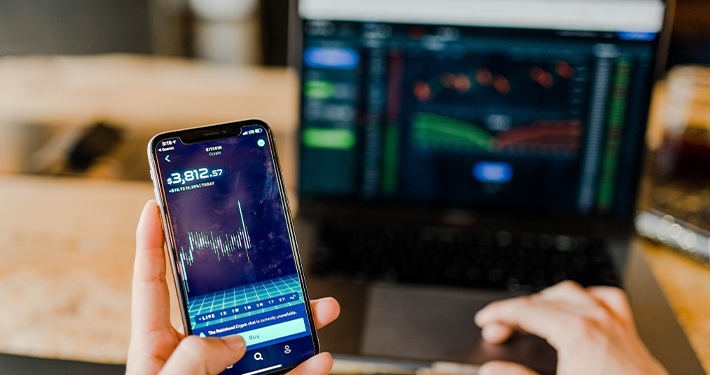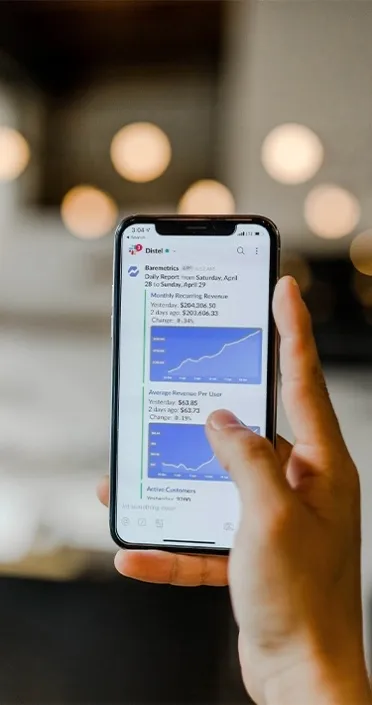

BLOCKCHAIN FOR ARTWORKS – WHY DO INVESTORS SUPPORT IT?
13 Apr 2021
BLOCKCHAIN FOR ARTWORKS – WHY DO INVESTORS SUPPORT IT?
Several players in the art industry offer blockchain services to increase the market’s transparency, track provenance, verify ownership and allow artists to collect commissions across the lifetime of an artwork. There have been massive investments into the sector over the last years and many startups aim to introduce these new technologies.
Blockchain could help solving one of the main problems in the art world. The Fine Art Experts Institute (FAEI) in Geneva published: Over 50% of the artworks examined by the institute in 2014 are either forgeries or misattributed to the wrong artists.
WHY ARE FRACTIONAL ARTWORK DEALS RELEVANT TO ART INVESTORS?
The most obvious advantages of creating an infrastructure for the tokenization of fractional artwork transactions are: Fast market access, portfolio diversification, reduced transaction costs and high liquidity compared to the traditional way of dealing artworks.
MAJOR PLAYERS ARE DRIVING FORCES BEHIND ART IN THE BLOCKCHAIN
We have collected news and facts around the connection of blockchain and the art industry. Blockchain stands for the democratization of art, because it lowers the barriers to entry and invites a diverse audience into the art world.

In 2015, Verisart was the first company ever to apply blockchain technology to the physical art market and has certified works by Ai Weiwei and Shepard Fairey. The company has collected 2.5 million USD in funds from blockchain investors.
Back in 2017, the TEFAF Art Market Online Focus published a survey concluding that 75% of auction houses were thinking about offering some kind of blockchain technology within the next five years.
Christie’s, one of the world’s leading auction houses, organized its first-ever Art+Tech Summit in 2018 with a focus on “Exploring Blockchain”.
Back in 2017, the TEFAF Art Market Online Focus published a survey concluding that 75% of auction houses were thinking about offering some kind of blockchain technology within the next five years.
Christie’s, one of the world’s leading auction houses, organized its first-ever Art+Tech Summit in 2018 with a focus on “Exploring Blockchain”.
In July 2018, blockchain platform Maecenas offered fractional stakes in “14 Small Electric Chairs” (1980) by Andy Warhol. 31.5% of the artwork went up for sale in cryptocurrencies, such as Bitcoin and Ethereum. The total value of the cryptocurrency share of the work was 5.6 million USD. This transaction made it into art and technology history books.
In November 2018, Christie’s New York partnered with blockchain-secured registry startup Artory. 318 million USD sales related of the Barney A. Ebsworth collection was entirely recorded via blockchain. The registry tracked provenance while allowing bidders to remain anonymous. This transaction made art history and facilitates a new era of trust in terms of provenance and authenticity.
Portion raised 5.5 million USD in funding in 2018 and announced the opening of its blockchain-based auction house.
In November 2018, Christie’s New York partnered with blockchain-secured registry startup Artory. 318 million USD sales related of the Barney A. Ebsworth collection was entirely recorded via blockchain. The registry tracked provenance while allowing bidders to remain anonymous. This transaction made art history and facilitates a new era of trust in terms of provenance and authenticity.
Portion raised 5.5 million USD in funding in 2018 and announced the opening of its blockchain-based auction house.
In April 2018, ArtChain raised 4 million USD in funding within 48 hours. The Melbourne-founded startup aims to put high-value artworks on the blockchain with a focus on the Chinese art market.
AllPublicArt allows artists and art collectors to do business with each other through smart contracts, eliminating the need to pay commissions to intermediaries. Apart from reducing costs, this also secures the validity of each peer-to-peer reviewed transaction. AllPublicArt intends the use of blockchain to minimize cases of forged art and to verify the ownership of artworks. The electronic marketplace aims at optimizing art trading by ensuring transparency and efficiency at every step of the process.
Founded in 2017, Masterworks enables investors to buy shares representing ownership of masterpieces by artists like Warhol or Monet. The experienced team has founded companies valued at over 1 billion USD. For its inaugural offering, the company offered an investment in Andy Warhol’s “1 Colored Marilyn” (1979), valued at 1.8 million USD and with an affordable minimum investment of 1,000 USD.
AllPublicArt allows artists and art collectors to do business with each other through smart contracts, eliminating the need to pay commissions to intermediaries. Apart from reducing costs, this also secures the validity of each peer-to-peer reviewed transaction. AllPublicArt intends the use of blockchain to minimize cases of forged art and to verify the ownership of artworks. The electronic marketplace aims at optimizing art trading by ensuring transparency and efficiency at every step of the process.
Founded in 2017, Masterworks enables investors to buy shares representing ownership of masterpieces by artists like Warhol or Monet. The experienced team has founded companies valued at over 1 billion USD. For its inaugural offering, the company offered an investment in Andy Warhol’s “1 Colored Marilyn” (1979), valued at 1.8 million USD and with an affordable minimum investment of 1,000 USD.

In 2018, Codex Protocol received 5 million USD in funds from blockchain investors Pantera Capital. The company offers a decentralized ledger for art and collectibles. Each user of the Codex network has a unique digital signature ensuring authenticity and anonymity.
TheArtToken (TAT) has raised over 11 million USD in funding so far. TAT represents fractional ownership of valuable artwork through security tokens.
Artory raised 7.3 million USD from an early Spotify investor and other backers in 2019. The blockchain-based art ledger enables users to trace provenance and title data, as well as record sales of works of art. Custody chains are authentic and tamper-proof.
TheArtToken (TAT) has raised over 11 million USD in funding so far. TAT represents fractional ownership of valuable artwork through security tokens.
Artory raised 7.3 million USD from an early Spotify investor and other backers in 2019. The blockchain-based art ledger enables users to trace provenance and title data, as well as record sales of works of art. Custody chains are authentic and tamper-proof.

Fresco has so far received 5.1 million USD in funding and is a blockchain-based trust distribution network based in Switzerland. Users assign anonymously tokens to each artwork, representing the potential value of the artwork assigned by community.
In January 2020, MakersPlace collected 2 million USD in funds from investors. The company allows creators to generate fingerprints on their artworks to show the ownership.
The Scarab Experiment combines artificial intelligence with tokenized memberships. The combined 1000 submissions of community members create a unique piece of art. Once the platform’s creative members have submitted their art, they receive a tradeable Scarab token.
In January 2020, MakersPlace collected 2 million USD in funds from investors. The company allows creators to generate fingerprints on their artworks to show the ownership.
The Scarab Experiment combines artificial intelligence with tokenized memberships. The combined 1000 submissions of community members create a unique piece of art. Once the platform’s creative members have submitted their art, they receive a tradeable Scarab token.
6 ARTISTS USING BLOCKCHAIN
Founded in 2017, Masterworks enables investors to buy shares representing ownership of masterpieces by artists like Warhol or Monet. The experienced team has founded companies valued at over 1 billion USD. For its inaugural offering, the company offered an investment in Andy Warhol’s “1 Colored Marilyn” (1979), valued at 1.8 million USD and with an affordable minimum investment of 1,000 USD.
In 2018, Codex Protocol received 5 million USD in funds from blockchain investors Pantera Capital. The company offers a decentralized ledger for art and collectibles. Each user of the Codex network has a unique digital signature ensuring authenticity and anonymity.
TheArtToken (TAT) has raised over 11 million USD in funding so far. TAT represents fractional ownership of valuable artwork through security tokens.
Artory raised 7.3 million USD from an early Spotify investor and other backers in 2019. The blockchain-based art ledger enables users to trace provenance and title data, as well as record sales of works of art. Custody chains are authentic and tamper-proof.
Fresco has so far received 5.1 million USD in funding and is a blockchain-based trust distribution network based in Switzerland. Users assign anonymously tokens to each artwork, representing the potential value of the artwork assigned by community.
In January 2020, MakersPlace collected 2 million USD in funds from investors. The company allows creators to generate fingerprints on their artworks to show the ownership.
The Scarab Experiment combines artificial intelligence with tokenized memberships. The combined 1000 submissions of community members create a unique piece of art. Once the platform’s creative members have submitted their art, they receive a tradeable Scarab token.
In 2018, Codex Protocol received 5 million USD in funds from blockchain investors Pantera Capital. The company offers a decentralized ledger for art and collectibles. Each user of the Codex network has a unique digital signature ensuring authenticity and anonymity.
TheArtToken (TAT) has raised over 11 million USD in funding so far. TAT represents fractional ownership of valuable artwork through security tokens.
Artory raised 7.3 million USD from an early Spotify investor and other backers in 2019. The blockchain-based art ledger enables users to trace provenance and title data, as well as record sales of works of art. Custody chains are authentic and tamper-proof.
Fresco has so far received 5.1 million USD in funding and is a blockchain-based trust distribution network based in Switzerland. Users assign anonymously tokens to each artwork, representing the potential value of the artwork assigned by community.
In January 2020, MakersPlace collected 2 million USD in funds from investors. The company allows creators to generate fingerprints on their artworks to show the ownership.
The Scarab Experiment combines artificial intelligence with tokenized memberships. The combined 1000 submissions of community members create a unique piece of art. Once the platform’s creative members have submitted their art, they receive a tradeable Scarab token.
THE FUTURE OF BLOCKCHAIN FOR ARTISTS AND ART COLLECTORS
These numbers and examples clearly reveal that blockchain has come to stay and professional market participants have been using it for a while, simply because of its huge benefits. As any collector is well aware of, value is always linked with authenticity, which has been difficult to prove for some artworks in the past. Despite unsolved inherent challenges relating to standardization, regulation and governance, smart investor money backing art blockchain startups see the potential to disrupt the art market.
LIMITED EDITIONS
are artist‘s choice:
For each unique artwork the artist selects the material that fits best, signs the certificate and makes art collectors happy.
For each unique artwork the artist selects the material that fits best, signs the certificate and makes art collectors happy.
Share this article
Categories
Featured posts

FINE ART PRICING – 23 PRICE DRIVERS FOR ARTWORKS
16 Jan 2021

WHAT IS 1 MINUTE ART?
08 Feb 2020

Thomas Guggemos | Surrealist Painter
01 Nov 2020
You might be interested